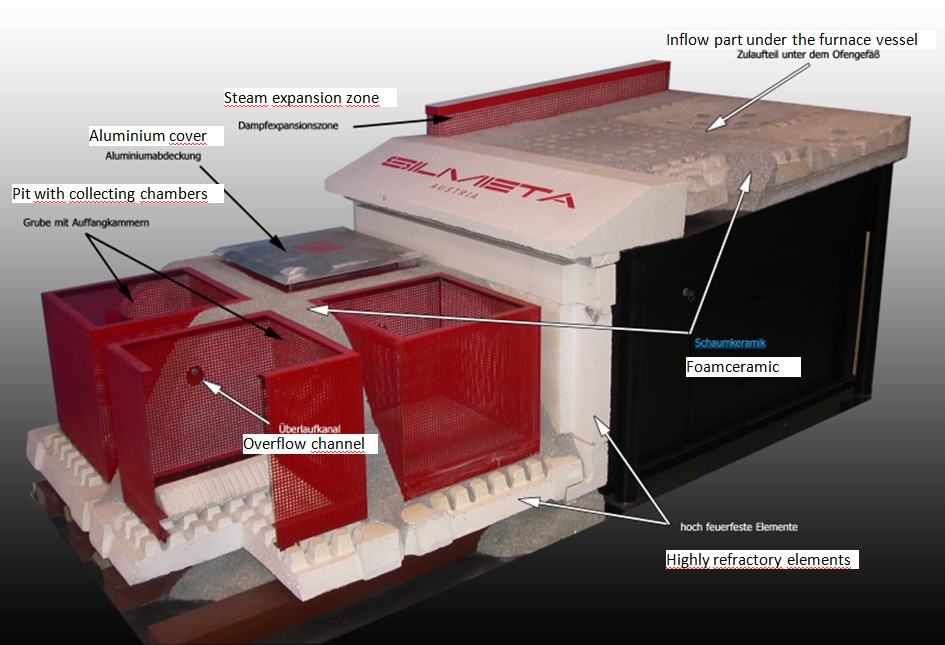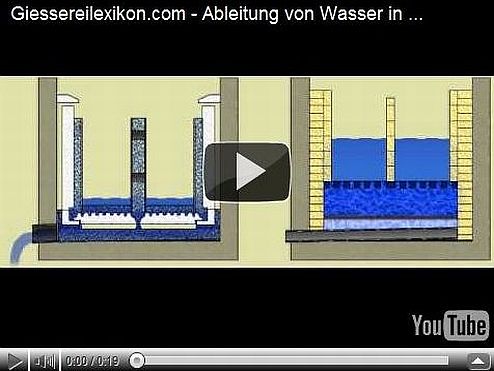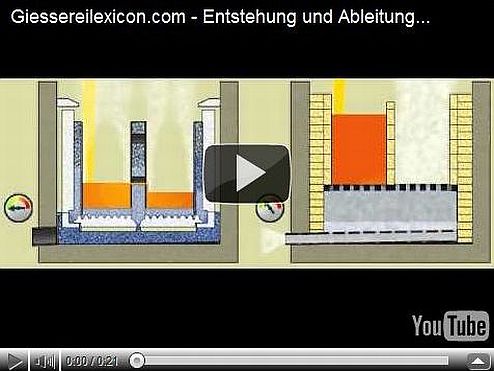The emergency collecting pit is a safety device and is arranged in front of (below) each water-cooled electro-smelting and holding furnace. After an accident in the furnace, and if all safety devices and/or control mechanisms have malfunctioned, the emergency collecting pit must be in a position to receive the entire contents of the furnace, and at the same time effectively prevent any contact with cooling water.
We have been building emergency collecting pits for over 25 years and comply fully with the guidelines of the VDG-Leaflet S 80. We surpass the essential safety points by a wide margin. Emergency collecting pits from Silmeta Systems are not an experiment, but rather a product of intensive research and development.
- According to specification, our emergency collecting pits accommodate the entire contents of the furnace, including a safety margin of 20%.
- The construction model type depends on the furnace size and the melt. In principle: per square meter of heat introduction surface that our systems have even when the collecting chambers are filled to the rim - more than 2 dm² of evaporation surface is available.
- Any cooling water and/or hydraulic fluid that gets out is still caught and diverted before the actual emergency collecting pit directly below the furnace (on the furnace production line).
- Both the emergency collecting pit and the furnace production line are equipped with additional steam expansion zones.
- All zones that are impinged by the melt are made out of modified foam ceramic.
- Corresponding to the construction model type, for reasons of statics, for the protection of the foundations, and for cooling after the "furnace break-out", fireproof finished elements in the form of specially developed floor and wall plates are used.
- Each individual collecting chamber is protected from mechanical damage on all walls by a reinforced and corrosion-protected perforated plate construction. The frame functions at the same time for the positioning of the accessible and profiled plate covers.
- Each part of the system can be repaired effortlessly after small damages.
- Depending on the construction model type, each system consists either of highly abrasion resistant finished parts and/or of foam ceramic that is, according to the requirements, protected in its construction from mechanical damage.
- Independently from the construction model type, all systems are connected to the foundation in a non-positive manner. This also applies to small systems made of finished parts.
 | |
Figure 1: Model of an emergency collection pit (Silmeta Systems GmbH) |
Animation 1: Drainage of water in an emergency collection pit, left using ceramic foam
as a drainage system from Silmeta Systems GmbH, right with standard floor drainage
Animation 2: Accumulation and drainage of steam, left construction from
Silmeta Systems GmbH, right standard construction




